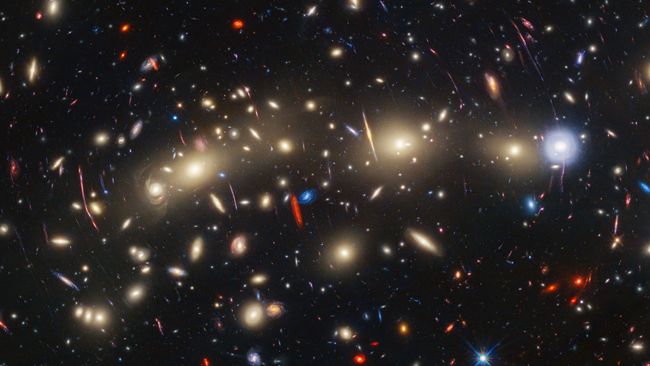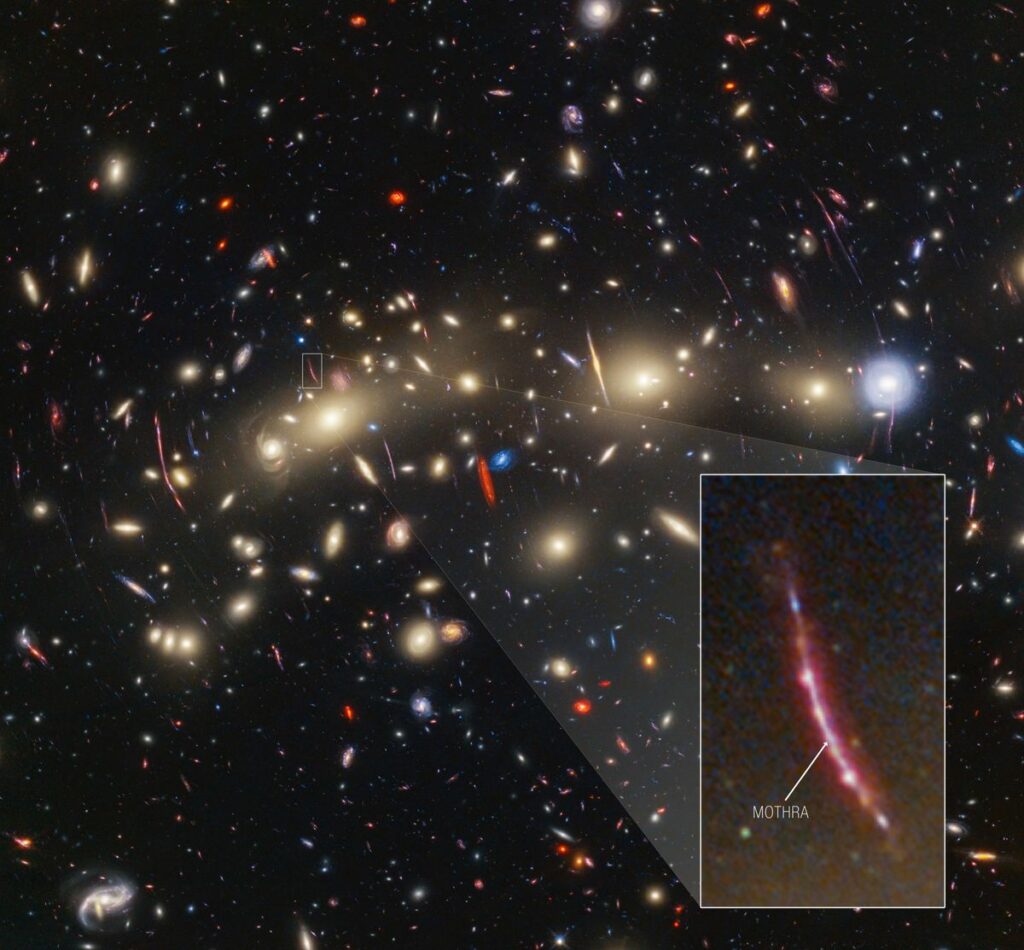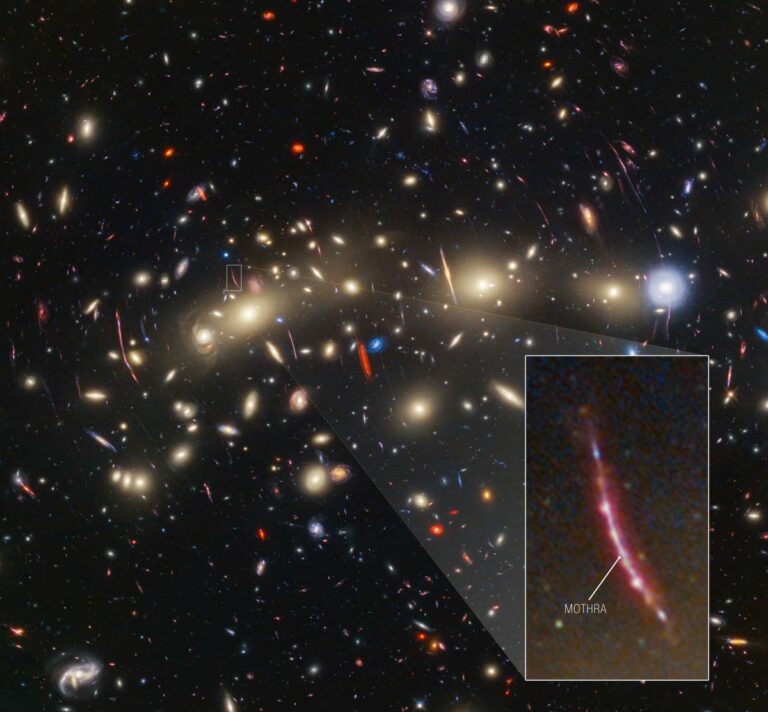James Webb Telescope Uncovers Enormous ‘Mothra’ Star in the Most Vibrant Image of the Universe Captured to Date
The collaborative efforts of the James Webb and Hubble Space Telescopes have captured a vibrant image of a galaxy cluster located 4.3 billion light-years away, marking one of the most colorful snapshots of the universe .

NASA has harnessed the capabilities of its two leading space telescopes to generate an exceptionally vivid and comprehensive portrayal of the universe. By utilizing data from the James Webb Space Telescope (JWST) and the Hubble Space Telescope to capture light across various wavelengths, a newly amalgamated image unveils a dazzling array of stars and galaxies within the expansive galaxy cluster MACS0416, positioned 4.3 billion light-years away from our solar system. While JWST observes infrared light, imperceptible to the human eye, Hubble captures visible light. The resulting panchromatic image exhibits colors that aid astronomers in gauging vast cosmic distances.
For instance, the image showcases galaxies in shades of blue and red surrounding the luminous line of lights constituting MACS0416. The bluer galaxies, primarily derived from Hubble’s data, are not only the closest to Earth but also bustling hubs of intense star formation. In contrast, the redder galaxies, produced by JWST’s infrared instruments, are dustier and situated farther away. These instruments have the capability to detect heat signatures through dust clouds.
The image also features concentric circles encircling MACS0416, representing objects situated far beyond it. These objects are magnified by MACS0416’s gravitational field through a phenomenon known as gravitational lensing. This occurs when a massive foreground object distorts the space around it, bending the light from objects positioned behind it. This fortuitous alignment is commonly referred to as a “cosmic magnifying glass,” revealing and amplifying distant objects.
Within this enhanced image, one of the magnified objects is a colossal star aptly named “Mothra.” NASA estimates that it is being magnified by a factor of at least 4,000 times.

Haojing Yan, a professor of astronomy at the University of Missouri and the lead author of a new paper detailing the findings, referred to MACS0416 as the Christmas Tree Galaxy Cluster, citing its vibrant colors and the presence of flickering lights. The statement was part of a NASA release, and the paper, accessible on the preprint database arXiv, has received acceptance for publication in The Astrophysical Journal.
This image may be the precursor to a series of similar ones. Hubble has been diligently capturing images of the faintest and youngest galaxies since 2014, while JWST is contributing valuable data about the early universe.
Rogier Windhorst, a professor of astronomy at Arizona State University and the principal investigator of the Prime Extragalactic Areas for Reionization and Lensing Science (PEARLS) program, which conducted the Webb observations, emphasized the necessity of combining Webb and Hubble data for a comprehensive understanding. He stated in the release, “The whole picture doesn’t become clear until you combine Webb data with Hubble data. We are building on Hubble’s legacy by pushing to greater distances and fainter objects.” Interestingly, while Hubble’s images took 122 hours to produce, JWST, collecting data nine years after Hubble, achieved the same result in just 22 hours.
Do not forget to share your opinion with us to provide you with the best posts !




0 Comments